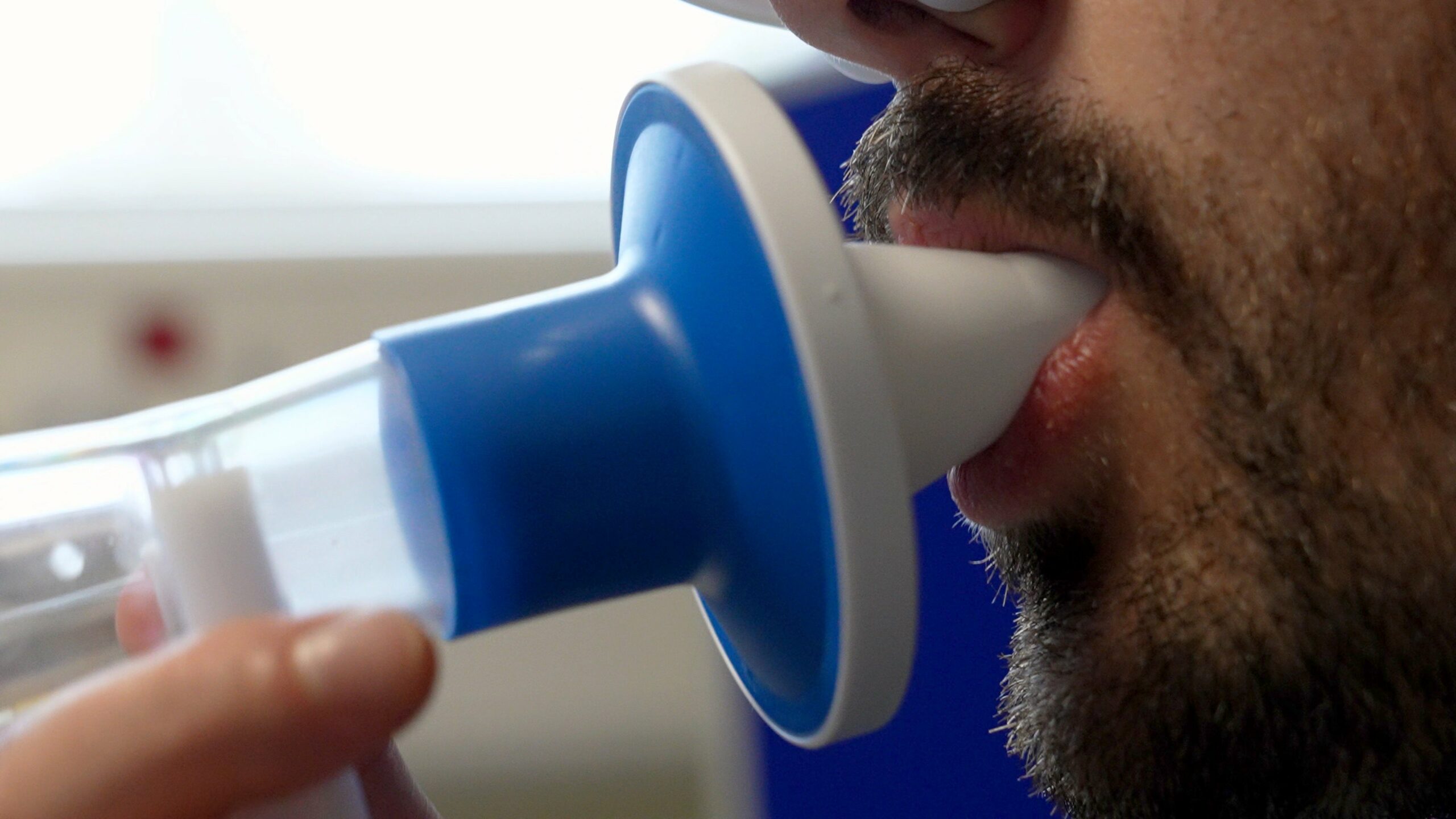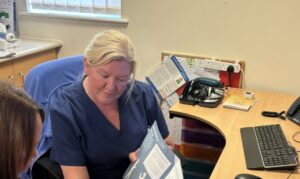The NHS 10-Year Plan: Five opportunities that could transform prevention

As attention turns to delivering the NHS 10-Year Plan’s bold ambitions, Professor Rob Copeland of Sheffield Hallam University argues that its true potential lies in community-based prevention. Drawing on evidence from the Advanced Wellbeing Research Centre, he sets out five overlooked opportunities that could redefine how the NHS supports population health and tackles inequality.
While recent media coverage has focused on AI promises and workforce expansion, the NHS 10-Year Health Plan for England contains important commitments regarding community-based prevention that could prove just as transformative for health outcomes.
At Sheffield Hallam University’s Advanced Wellbeing Research Centre (AWRC), we have spent the last five years implementing and evaluating community-based prevention approaches across South Yorkshire. This experience has convinced me that the plan’s intention to shift focus from “sickness to prevention” isn’t just rhetoric, but is the necessary policy focus to re-imagine health and care and tackle inequalities. It won’t just happen, however; it needs investment.
The plan contains specific mechanisms that, if implemented effectively, could revolutionise how hospital leaders think about population health, financial incentives, and community partnerships. Here are five elements worthy of immediate consideration:
1. Health and Growth Accelerators represent an economic-health integration revolution
The plan’s commitment to establish Health and Growth Accelerators across all integrated care boards (ICBs) represents a principle we’ve been advocating for a number of years at the Advanced Wellbeing Research Centre – that health and economic outcomes are inseparable.
The commitment for all ICBs to establish “specific and measurable outcome targets on their contribution to reducing economic inactivity and unemployment” marks a significant shift in the NHS’s role from a service primarily focused on treating illness to one accountable for population-level economic outcomes. To realise this ambition, the NHS must go beyond policy and actively build the relationships and infrastructure within communities that enable prevention and wellbeing to flourish.
This approach aligns with evidence showing that for every £1 invested in community-led health initiatives, up to £8.56 in social and economic value is generated. It also reflects a growing recognition that “the biggest barriers to better health often lie in systems that make healthy choices difficult for those living in the poorest communities” – a reality we’ve long highlighted, where your postcode still largely determines your health outcomes.
Through our virtual clinic for long-COVID, we’ve demonstrated how community-based approaches can reach underserved populations who might otherwise struggle to access traditional healthcare services. By addressing the social determinants of health – employment, housing, access to green space – we can create measurable improvements in both population health and economic activity.
2. Co-location mandates could revolutionise infrastructure beyond sharing buildings
The plan’s mandate for Neighbourhood Health Centres to “co-locate NHS, local authority and voluntary sector services”, including rehabilitation services, represents the infrastructure revolution we’ve been pioneering at the National Centre for Sport and Exercise Medicine in Sheffield over the past decade.
Our model has facilitated over 120,000 annual clinical appointments in community settings, with nearly half of referrals coming from the most deprived communities. We’ve also seen examples where co-location achieves substantial reductions in secondary care referrals. Ensuring that the majority of the population has access to co-located services within 20 minutes of their home would be transformative in terms of health equity – but we’ve learned that co-location must go beyond physical proximity with success dependent on genuine community ownership and design.
This requires productive partnerships that leverage diverse skills, reduce duplication and drive innovation, prioritising investment in community-led decision making.
3. Value-based payments finally reward prevention over treatment
The plan’s commitment to ‘pay for impact on health outcomes’ represents the most significant opportunity to embed prevention at scale. Our Active Together cancer prehabilitation programme demonstrates exactly what this looks like in practice – we’ve observed a 95 per cent one-year survival rate compared to 85 per cent for non-participants, with estimated net savings of £366.36 per patient.
The introduction of Year of Care Payments that incentivise keeping patients healthy rather than treating illness represents a fundamental shift we’ve been arguing for. These payments consolidate all primary care, community health, mental health, specialist outpatient care, and emergency services into single capitated budgets, creating sharp incentives to invest in prevention rather than just treat illness, and providing a powerful drive to develop the aforementioned relationships and infrastructure with community organisations that will be essential for keeping people well.
4. Prevention workforce development remains critically underdeveloped
Despite the plan’s prevention rhetoric, it overlooks the importance of equipping existing staff with prevention skills. This reflects a missed opportunity to make rapid, yet meaningful progress. We know from our work that healthcare professionals need practical skills to have meaningful conversations about physical activity, movement, and lifestyle. The Physical Activity Clinical Champions (PACC) programme has upskilled over 58,000 healthcare workers across England, creating the capability, capacity and scalability for a prevention-focused workforce.
The plan’s commitment to overhauling education and training curricula over the next three years creates the perfect opportunity to embed physical activity promotion as a core competency. Our integrated curriculum approach at Sheffield Hallam University shows how this can work – but it requires systematic commitment, not just good intentions. Without workforce development, the prevention shift risks remaining aspirational rather than operational.
5. Prehabilitation represents untapped potential beyond cancer care
The plan’s limited detail on prehabilitation programmes represents a significant gap, particularly given the evidence of their impacts across multiple conditions and surgical outcomes. While we’ve demonstrated clinical and economic benefits in cancer care through initiatives like our Active Together programme, the potential extends far beyond oncology to orthopaedics, cardiac surgery, and other planned procedures.
Community-based prehabilitation programmes that address barriers such as geographic location and socioeconomic status create more resilient populations while reducing system pressure. Our research demonstrates that addressing common barriers to access promotes inclusivity and achieves better health outcomes for all populations.
We call for a comprehensive rehabilitation (including prehabilitation) guarantee across all ICBs by the end of this Parliament – not just for cancer care, but as a systematic approach to building population resilience across all planned procedures and long-term conditions. The evidence base exists; what’s missing is systematic implementation across the NHS.
Local innovation must bridge the implementation gaps
The plan’s success depends on local innovation to bridge the aforementioned implementation gaps in terms of capability and capacity. Therefore, hospital leaders should be supported and encouraged to focus on immediate actions such as developing prevention capabilities within existing teams via PACC training, establishing meaningful partnerships with community assets through embedded and co-funded roles, and designing prehabilitation into the pathways of planned procedures, including those that extend beyond traditional clinical boundaries.
We invite hospital leaders to visit the AWRC at the Sheffield Olympic Legacy Park to see these approaches in action. The evidence is compelling, the methods are established, and the time for action is now. As the NHS implements its 10-Year Plan, we have a unique opportunity to create a healthcare system that doesn’t just treat illness but purposefully promotes health for all communities.










